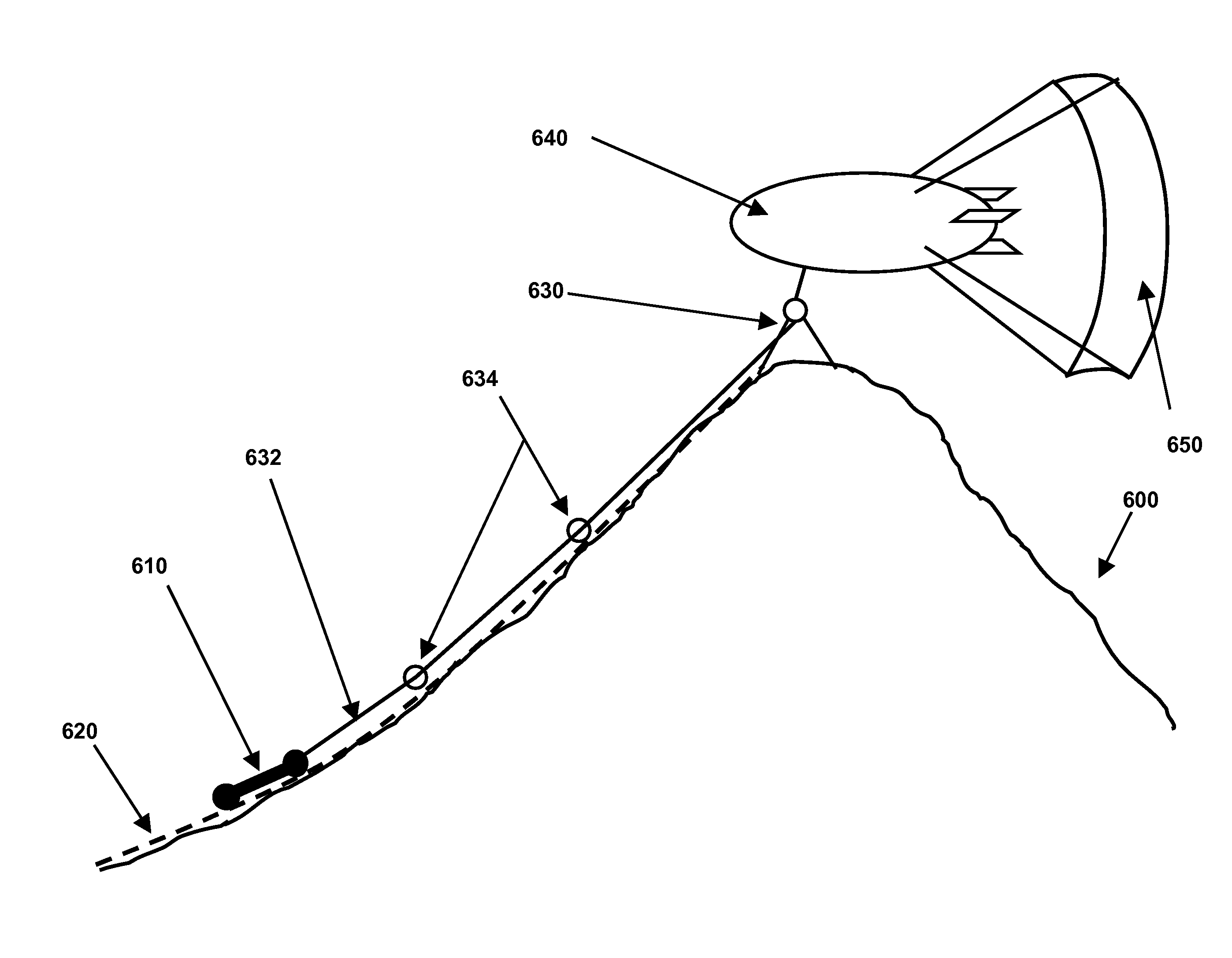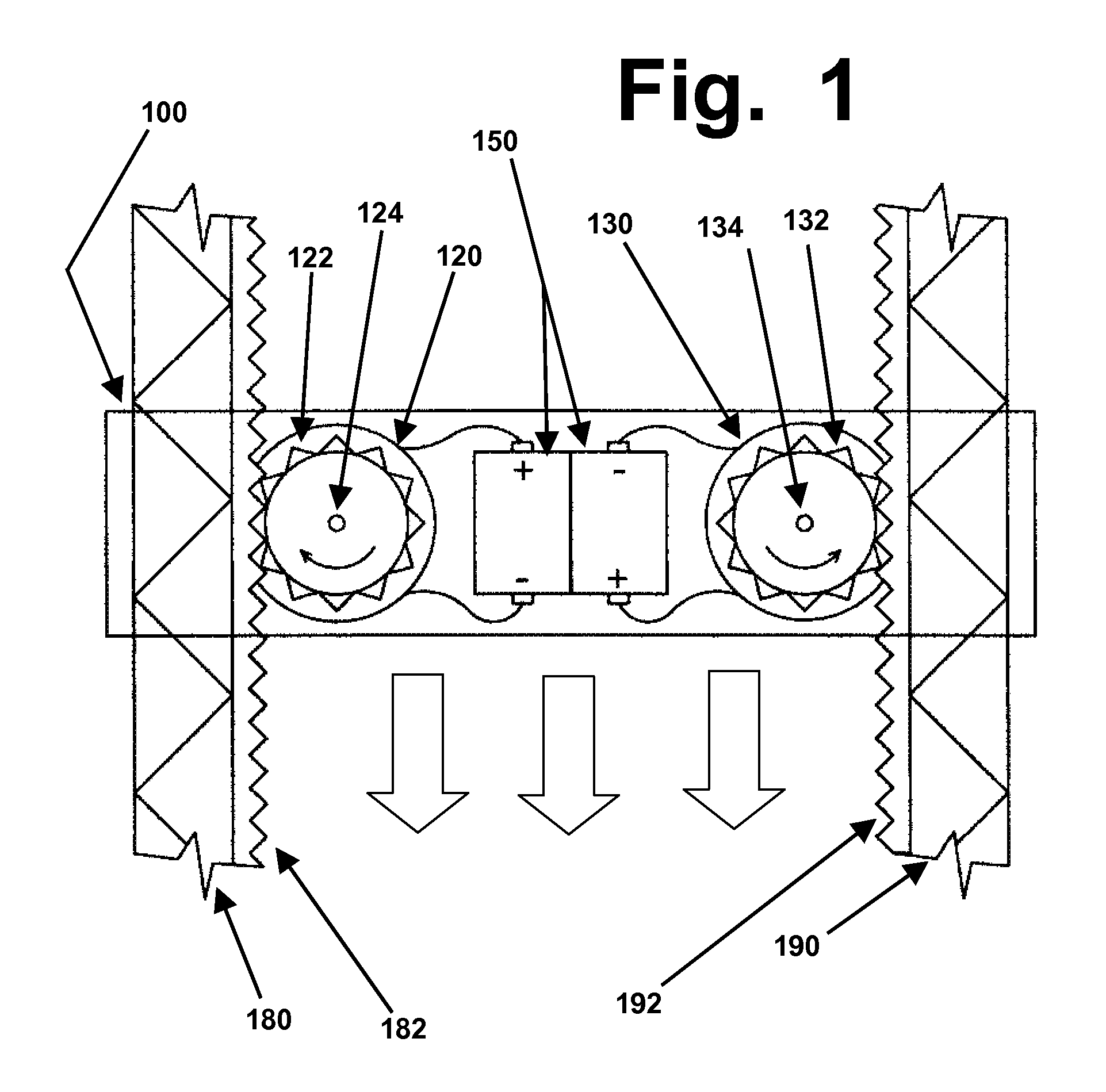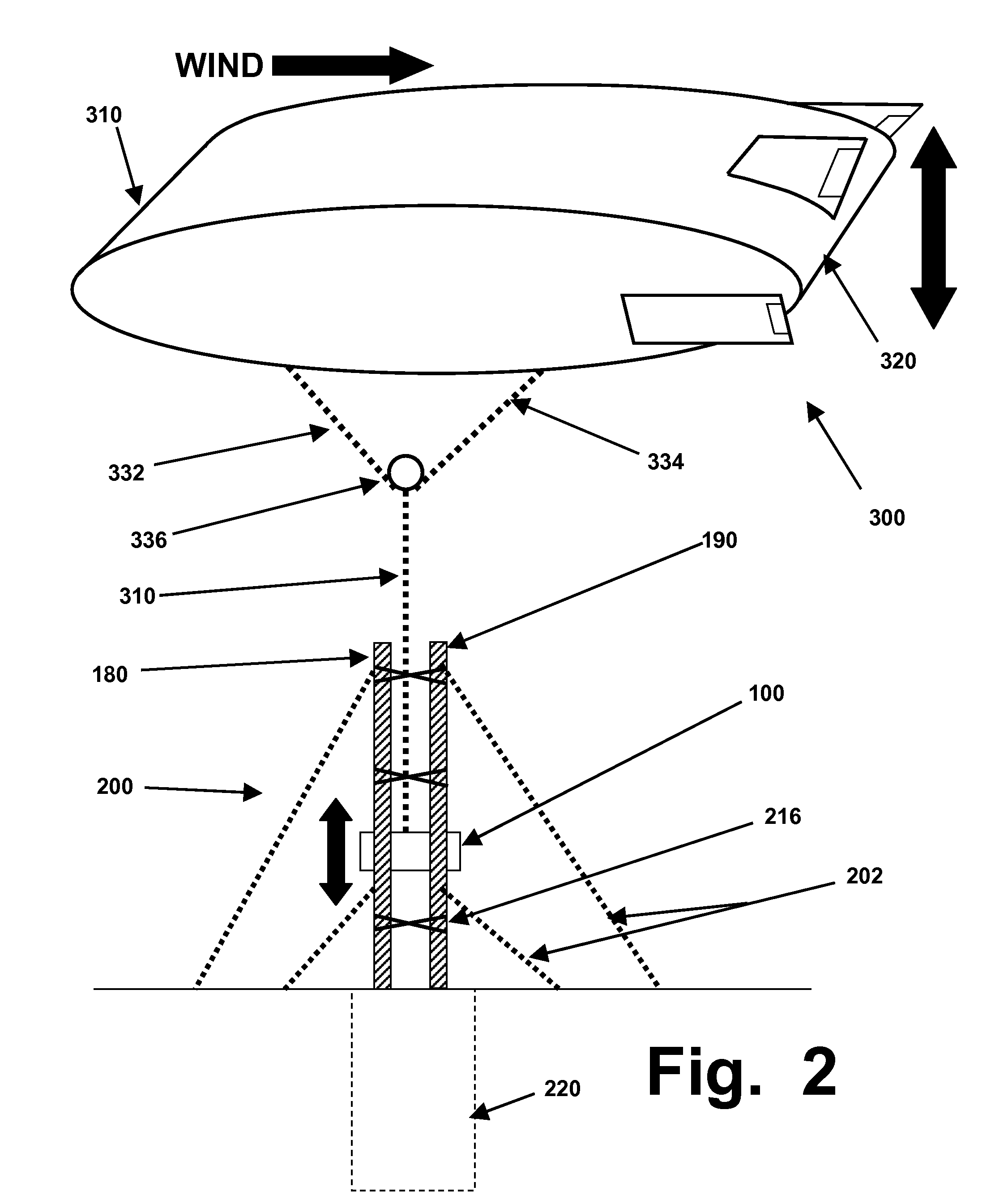Reciprocating system with buoyant aircraft, spinnaker sail, and heavy cars for generating electric power
a technology of electric power generation and reciprocating system, which is applied in the direction of electric generator control, machine/engine, greenhouse gas reduction, etc., can solve the problems achieve the effect of reducing the efficiency of wind turbines, increasing the input power, and increasing the force, power and work
- Summary
- Abstract
- Description
- Claims
- Application Information
AI Technical Summary
Benefits of technology
Problems solved by technology
Method used
Image
Examples
Embodiment Construction
[0072]As briefly summarized above, either and preferably both of two types of lifting and pulling devices (a helium- or hydrogen-filled zeppelin, and a spinnaker-type sail) are used to lift a heavy traveling unit (which can also be called a reciprocating or cycling weight, car, unit, or similar terms) to an elevated height, such as on a vertical or sloping track installed in a tower assembly, in or alongside a tall building, or on a slope of a large hill or mountain. After the heavy car reaches its highest point of ascent, it is released from the pulling and lifting device(s), and it descends down the track, using its weight and motion to generate electric power as it descends.
[0073]In one preferred embodiment, the heavy car can contain one or more large generators, and will use metallic wheels, or other brushes or contacts, to continuously transfer electric current from the generator(s) into the rail system, as the heavy car descends. In a second preferred embodiment, the heavy car...
PUM
 Login to View More
Login to View More Abstract
Description
Claims
Application Information
 Login to View More
Login to View More - R&D
- Intellectual Property
- Life Sciences
- Materials
- Tech Scout
- Unparalleled Data Quality
- Higher Quality Content
- 60% Fewer Hallucinations
Browse by: Latest US Patents, China's latest patents, Technical Efficacy Thesaurus, Application Domain, Technology Topic, Popular Technical Reports.
© 2025 PatSnap. All rights reserved.Legal|Privacy policy|Modern Slavery Act Transparency Statement|Sitemap|About US| Contact US: help@patsnap.com



